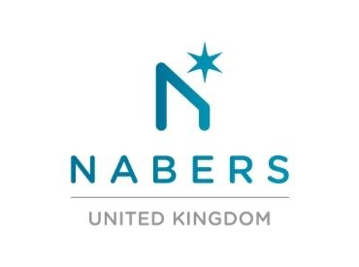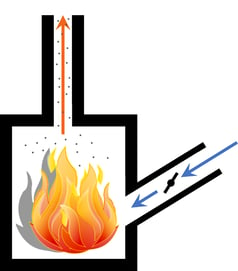
This morning (26 November 2020) I, virtually, attended the official launch of the NABERS UK Rating scheme, presented by the Design for Performance Initiative and chaired...
The problems of overheating and air pollution are inherent to any solid fuel burner, but they can be mitigated. A well-designed installation can achieve the pleasant ambience that makes a solid fuel burner desirable while minimising the drawbacks and meeting the regulatory requirements.
The first part of our guide to solid fuel burners discussed the potential drawbacks of using them and the relevant regulatory requirements:
Solid fuel burners 1: pollution, overheating and regulation
For anyone who is not put off by them, this article will cover how to address the drawbacks and make the most of the heat it produces.
The first choice to make is between an open fire and a closed stove. With modern stoves delivering efficiencies of 70-80% while open fires deliver 15% efficiency with more pollution inside the house and out, it’s not a difficult choice.
The key difference is that a stove encloses the fire in a metal case, which has several advantages:
The latter point resolves a regulatory conundrum because the Part J ventilation requirements often amount to more air leakage than deemed acceptable by Part L, which covers conservation of energy.
A common problem with solid fuel burners is that the installed stove is larger than it needs to be, leading to an unnecessarily high fuel requirement and an overheated home. The ClearSkies certification is a good guide to efficiency but it is important to make sure that the energy rating of the stove is no higher than needed for the home it will be sited in.
The downside of the stove’s efficiency is that it often produces far more heat energy than is needed to heat the room it is in. A back boiler is a way to make use of that heat.
Heat can be captured by running a water pipe through the burner itself or a water jacket around it. The heated water then distributes heat around the home rather than only heating the room the burner is in. It may be connected directly to a central heating system and it may also transfer heat energy into the hot water tank through a heat exchanger.
However well designed a stove is, it will produce more heat energy than is needed in most homes. Heating from solid fuel cannot be controlled with the same precision as electricity or gas but a damper in the inlet can exert some control over the rate of combustion.
 |
|
Schematic of solid fuel stove with enclosed airflow controlled by a damper. |
Control of the damper may be manual or in an automated smart home, it may be placed under the control of a system like our own Atamate building operating system (atBOS). Using atBOS has the further advantage that it balances the space and water heating generated by the solid fuel burner with other heating services. Our case study of a home refurbished to incorporate a burner shows how a control system can keep the inefficiencies inherent to using a solid fuel burner to a minimum.
However, there is a potential downside to damper control. It works by reducing the oxygen supply and slows the rate of combustion. Unfortunately, it also reduces how completely the fuel burns and incompletely burned fuel is the source of the particulate matter that gives rise to PM2.5 particles.
For that reason, damper control should only be used with smokeless fuels or in homes that are isolated enough that they will not raise the local particulate count above the WHO safe limits.
Ultimately, the decision to install a solid fuel burner is a lifestyle choice rather than a viable option for clean or efficient energy. The idea of flames in the living room is seductive but without a clear understanding of the ramifications, a burner can become an expensive centrepiece that is never used. We recommend consideration of why and how often the burner will be used so that its installation can be designed accordingly.
If you’d like to know more about how atBOS controls can make the most of a solid fuel burner, ask us on the form and we'll be happy to discuss it.

This morning (26 November 2020) I, virtually, attended the official launch of the NABERS UK Rating scheme, presented by the Design for Performance Initiative and chaired...

The atBOS sensor network comprehensively monitors a building’s indoor environment and energy use. The data facilitates building management and can also be used in...